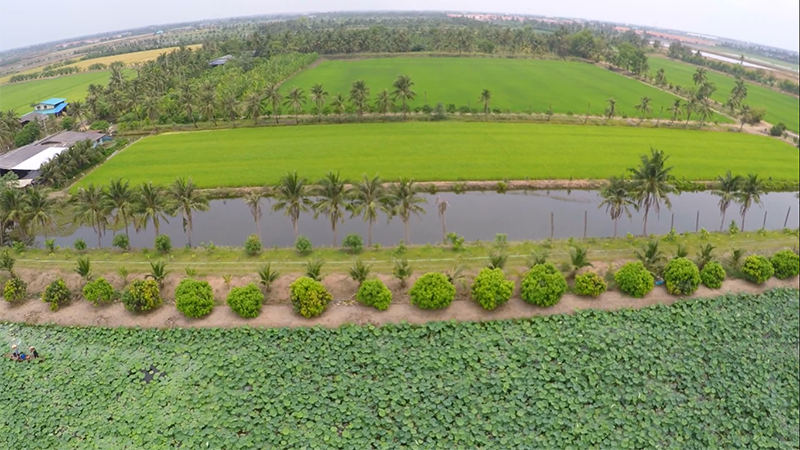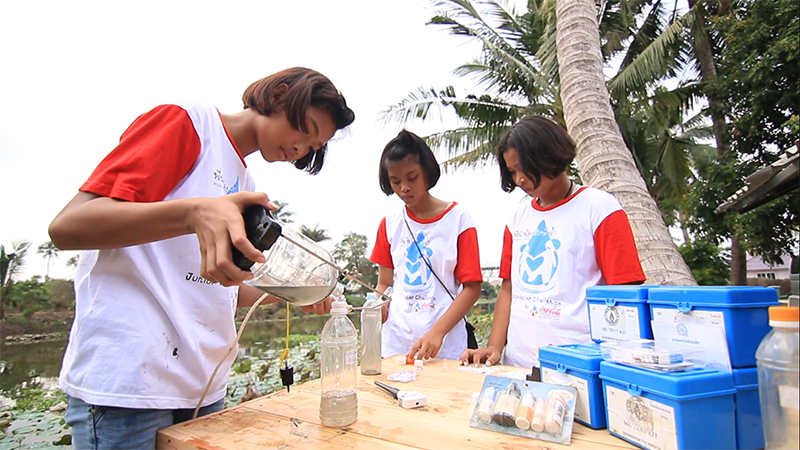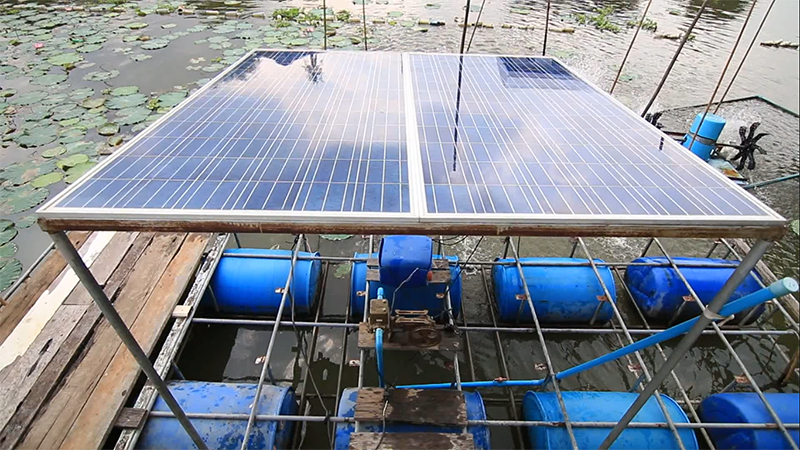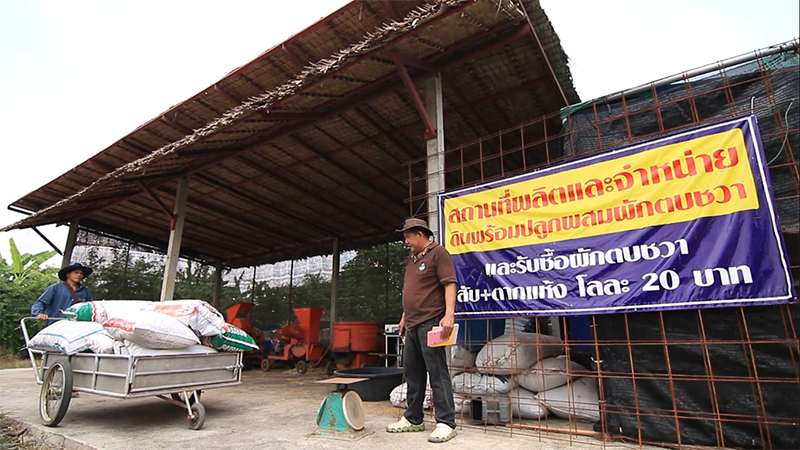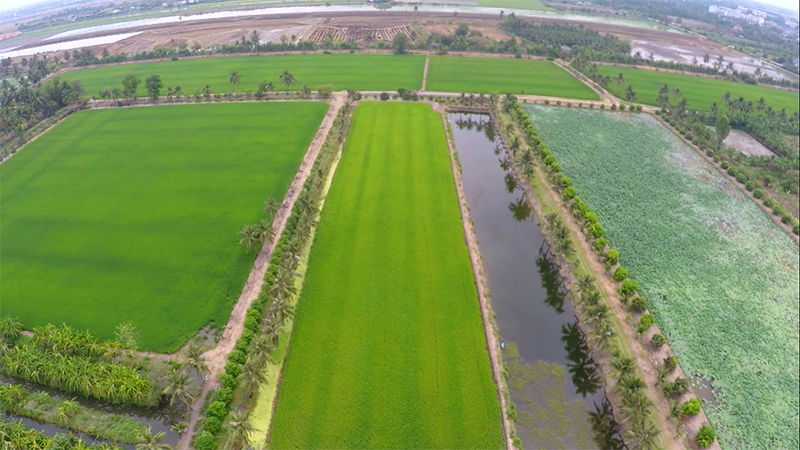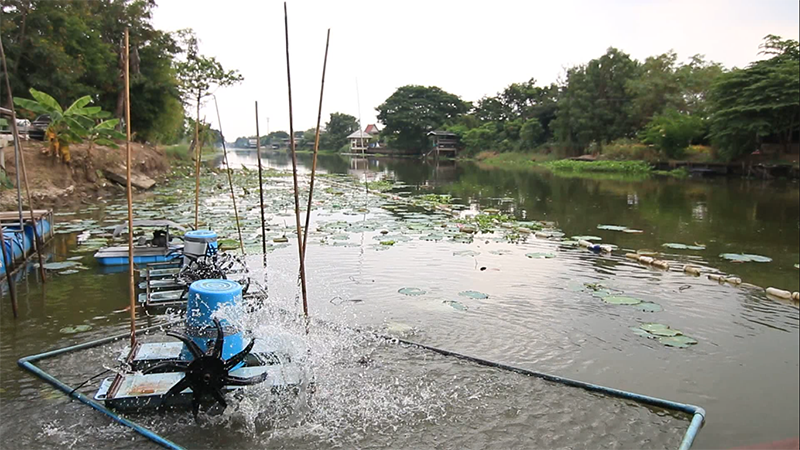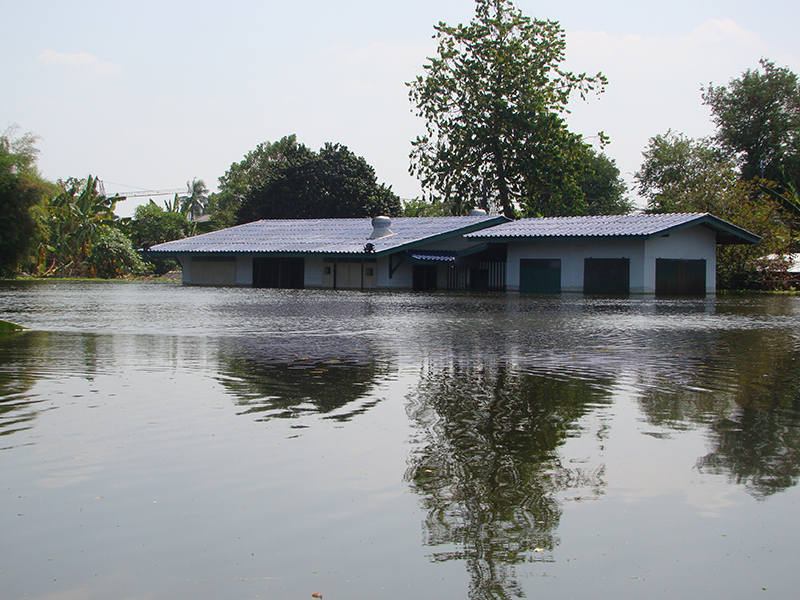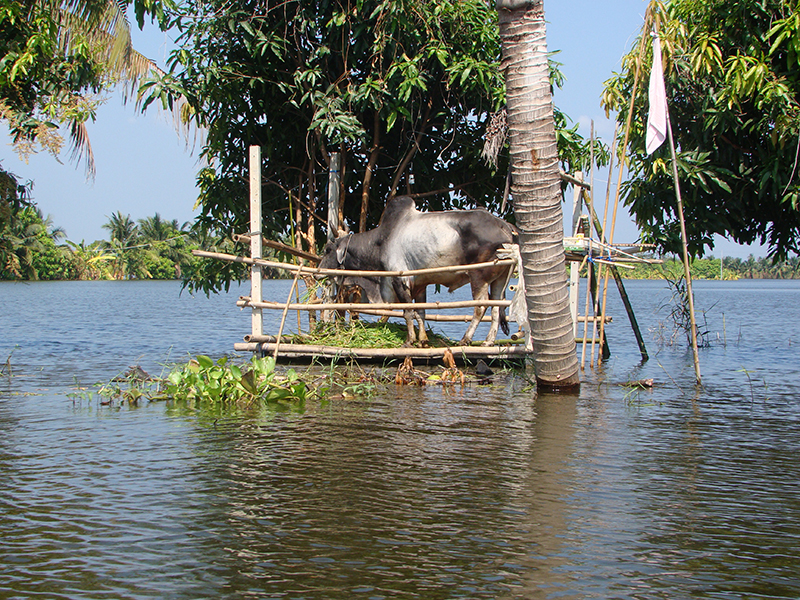Ban Sala Din
“A Sustainable Life for the Community by Ta Chin Basin”

Water Source: The Only Hope for an Agricultural Community
Ban Sala Din Community in Nakhon Pathom Province on the Tha Chin Basin often faced problems regarding water resources, from floods, droughts, wastewater, to brackish water, with all these problems occurring due to the lack of care for water resources. Moreover, as most of the locals had only one occupation which is rice farming, once the community faced a water shortage, they immediately lacked income, resulting in poverty. In 2011, the community faced severe floods in which the floodwater was not able to drain out to the surrounding canals due to the floodgates that were erected to control the level of water in the canals. The canals were also full of water hyacinth, trash, chemicals used in agriculture, and household waste. Most importantly, the community lacked a leader to solve these ongoing problems, therefore, the community’s problems worsened as time passed.
Finding Community Leaders and Seeking Knowledge to Become Self-Reliant
After the major flooding in 2011, the community started to implement projects to manage their water resources in tangible ways. With assistance from the Hydro-Informatics Institute (Public Organization) or HII and Utokapat Foundation Under Royal Patronage of HM The King, the community was able to rely on their own strength, finding their own leaders and promoting engagement from locals to feel a shared ownership towards the water resources. With cooperation from the community, the organizations supported locals to learn how to use technology together with local wisdom in line with the Sufficiency Economy philosophy:
- Registering the community as the Ban Sala Din Water User Group for Agriculture Community Enterprise with HII helping locals to manage water resources using science and technology in these following ways:
- Drawing a map which shows the water direction and learning to gather data and analyze problems using technology such as maps from satellite images and Global Positioning System or GPS
- Reviving canals in the area by cleaning the canals and removing sediments, constructing a tunnel underneath the road to connect canals together to allow for better drainage and to establish a water circulation system in the community
- Building a prototype for an aerator using solar power and installing a solar-powered waterwheel in the canals
- Installing a simple household grease trap to separate grease from cooking from wastewater and using bio-fermented liquid and effective microorganisms (EM) ball to treat wastewater
- Applying the New Theory Agriculture in the community in order to allocate land properly to allow for the recirculation of water resources to grow crops in each area, for example, the rice field, lotus pond, orchard, field and fish pond
- Cleaning and removing sediments from the canal besides the train tracks as well as the canals that connects with Mom Chao Chaloem Si Canal, and constructing a tunnel underneath the road to allow for water circulation which is a natural way to improve the water quality by using clean water to chase wastewater. Moreover, the community eliminated structures that obstructed the water flow in order to enhance the efficiency of water drainage. Then, they continually contributed to caring for the canals.
- Establishing a fund to conserve the environment and canals, buying water hyacinth to process into products, conserving the local canals, and planting trees along the canals across Maha Sawat Subdistrict.


The Success Beyond Water Issues
After the community joined forces to manage water resources and achieved self-reliance from learning about cleaning canals and allocating water storage areas using simple yet effective technology, natural abundance returned to the water resources at Ban Sala Din. The community no longer faces floods, droughts, waste water, or brackish water. Meanwhile, the condition of the canals became better, the number of water animals increased, the local economy improved, people started to use the canals as a waterway, thus reviving ecotourism from the lotus ponds. Locals in the community were also able to generate more income from their knowledge regarding land management and integrated farming, from keeping lotus ponds, growing garden vegetables, to raising fish. On the other hand, the community now adds value to trash in order to generate income for locals, for example, by gathering water hyacinth and mixing with soil to be sold, thus forming the community welfare fund which contributes to sustainably developing a better quality of life.
Video
Brochure
No brochure yet.

